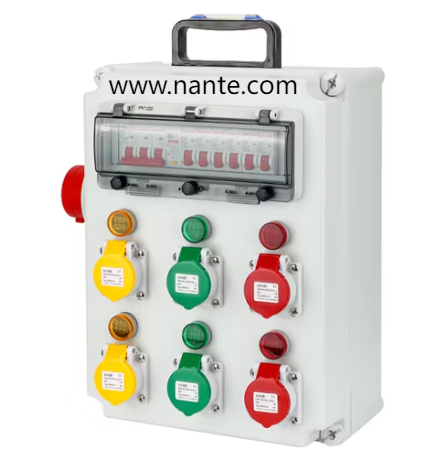Nante Weather Resistant Panels and Accessories for Residential Use

Many DIY enthusiasts considering yard upgrades wonder whether they can handle an outdoor electrical distribution panel project without calling a contractor. When weighing that choice, homeowners must balance skill, safety, and local rules. The outdoor electrical distribution panel anchors garden lighting, pump systems, and external outlets, so its siting and wiring influence how reliably power reaches every load while keeping people safe.
A clear starting point is assessing personal ability. Simple tasks like mounting an enclosure and running flexible conduit may look approachable, but practical wiring involves identifying service capacity, selecting protection devices, and creating secure grounding. Mistakes at this stage can create nuisance trips, component stress, or worse, shock risk. Those comfortable with basic electrical work may manage parts of the job if they follow authoritative guidance and adopt proper protective gear during every step.
Permitting and inspection matter. Local authorities often require notices before energizing outdoor distribution equipment and they may specify minimum clearances or mounting heights. A permit process also enforces that hardware meets accepted standards; inspectors confirm breakers and neutral bonding conform to regulation. Skipping this step risks remedial costs and could complicate insurance claims after a loss. Planning for approvals up front reduces surprises and ensures an orderly handoff to later occupants.
Tooling and testing equipment expand beyond a common toolbox. While a drill, screwdriver set, and ratchet may handle physical mounting, effective wiring needs torque tools for terminal screws, a reliable voltage tester for live checks, and a clamp meter for load verification. A final step commonly overlooked involves load sequencing and soft starts to prevent nuisance trips when multiple devices come online. Testing under realistic conditions during commissioning reveals weak links early and saves disruption later.
Selecting a suitable location requires thinking about environment and access. Mount an enclosure where it avoids direct splash paths from sprinklers and where technician access remains clear. Elevating the box above likely water lines protects internal devices after storms. Adequate airflow prevents heat buildup when panels house metering or surge modules. Choosing a sheltered spot also reduces cosmetic wear so the assembly remains serviceable for years.
Safety features deserve emphasis. Circuit protection, ground fault interrupters, and surge suppression are not optional extras; they preserve equipment and protect users. Arranging these elements near the service entry keeps unprotected wire runs short. Lockable covers deter tampering in shared yards and reduce accidental unplugging during busy events. Clear labeling for each outgoing circuit speeds troubleshooting when a fault occurs and helps nontechnical household members understand basic operation.
Time and cost tradeoffs shape the decision to DIY. Doing some work in house can save labor fees, but unexpected complications such as rework from incorrect conduit bends or mismatched device ratings can consume time and funds. A hybrid strategy often works well: homeowners handle physical mounting and basic routing while licensed electricians complete final terminations and perform required inspections. This split lets residents participate while ensuring critical connections meet safety tests.
Maintenance planning rounds out a sustainable approach. After installation, periodic checks of seals, fasteners, and terminal tightness prevent slow failures. Infrared scans reveal resistive heating that indicates loose or corroded joints. Keeping a simple log of checks and noting component replacements reduces the chance of surprise downtime. For those who prefer hands off operation, arranging a maintenance contract with a local service provider ensures continuity of protection and performance.
Where to source reliable enclosures and accessories matters. Choosing hardware designed for outdoor conditions reduces retrofit hassle. Look for vendors offering configurable panels with clear installation guides, accessory kits, and spare parts. Supplier support often includes technical notes for grounding practice and conduit selection that help bridge the gap between homeowner effort and professional standards.
Deciding whether to install an outdoor distribution unit yourself comes down to comfort with electrical fundamentals, willingness to follow regulatory steps, and access to proper testing tools. Combining personal effort with professional involvement where codes require it often yields an effective and safe outcome. For those seeking ready to install enclosures and detailed guidance, explore manufacturer offerings that pair weather resistant cabinets with clear technical documentation and local support. For example, product pages and support resources at https://www.nante.com/ include configuration details, accessory lists, and guidance that help home projects move from plan to reliable operation. Technical teams can advise on selection and sizing to match site conditions, and spare part options simplify future upkeep.





